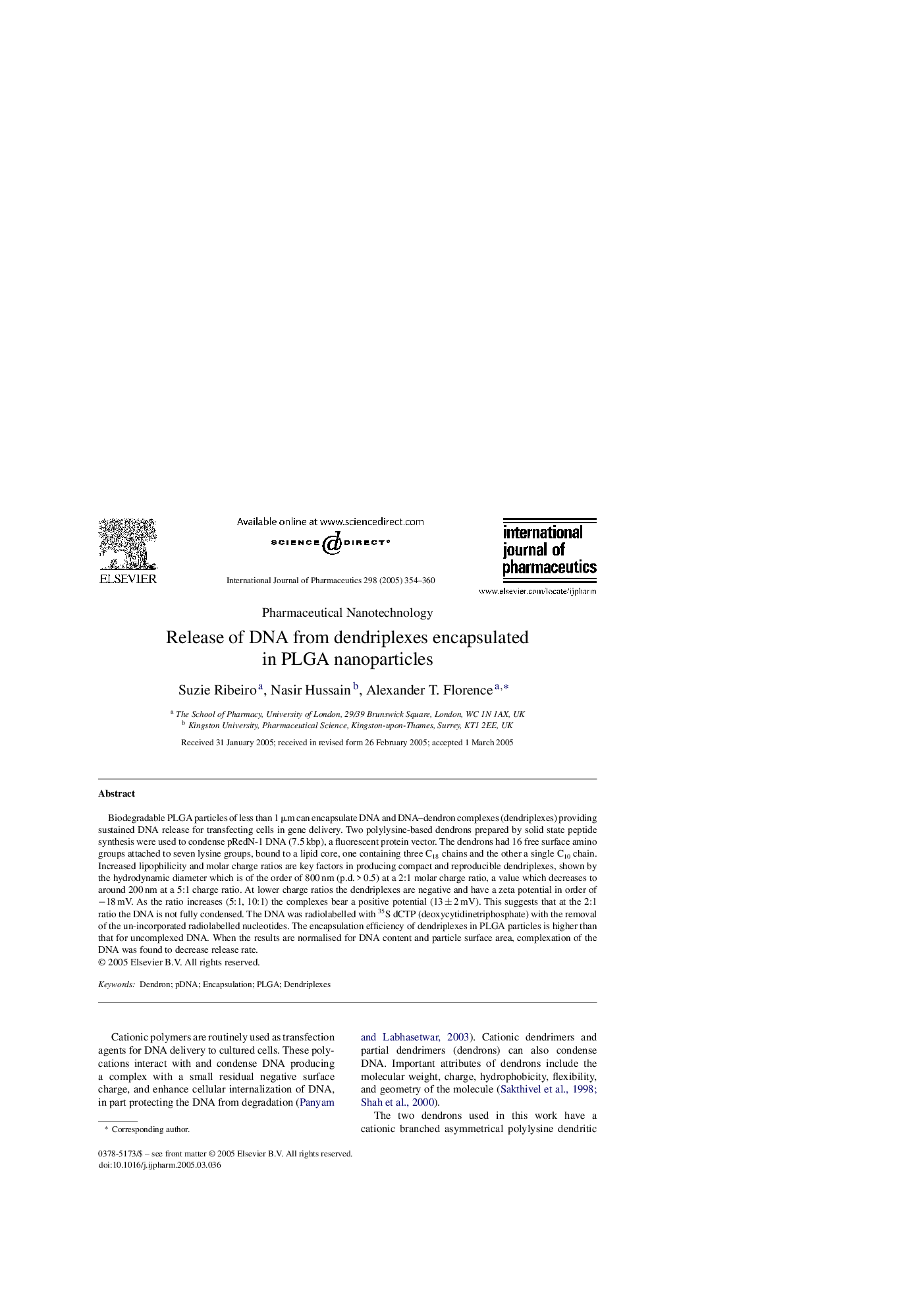| Article ID | Journal | Published Year | Pages | File Type |
|---|---|---|---|---|
| 9918724 | International Journal of Pharmaceutics | 2005 | 7 Pages |
Abstract
Biodegradable PLGA particles of less than 1 μm can encapsulate DNA and DNA-dendron complexes (dendriplexes) providing sustained DNA release for transfecting cells in gene delivery. Two polylysine-based dendrons prepared by solid state peptide synthesis were used to condense pRedN-1 DNA (7.5 kbp), a fluorescent protein vector. The dendrons had 16 free surface amino groups attached to seven lysine groups, bound to a lipid core, one containing three C18 chains and the other a single C10 chain. Increased lipophilicity and molar charge ratios are key factors in producing compact and reproducible dendriplexes, shown by the hydrodynamic diameter which is of the order of 800 nm (p.d. > 0.5) at a 2:1 molar charge ratio, a value which decreases to around 200 nm at a 5:1 charge ratio. At lower charge ratios the dendriplexes are negative and have a zeta potential in order of â18 mV. As the ratio increases (5:1, 10:1) the complexes bear a positive potential (13 ± 2 mV). This suggests that at the 2:1 ratio the DNA is not fully condensed. The DNA was radiolabelled with 35S dCTP (deoxycytidinetriphosphate) with the removal of the un-incorporated radiolabelled nucleotides. The encapsulation efficiency of dendriplexes in PLGA particles is higher than that for uncomplexed DNA. When the results are normalised for DNA content and particle surface area, complexation of the DNA was found to decrease release rate.
Related Topics
Health Sciences
Pharmacology, Toxicology and Pharmaceutical Science
Pharmaceutical Science
Authors
Suzie Ribeiro, Nasir Hussain, Alexander T. Florence,
